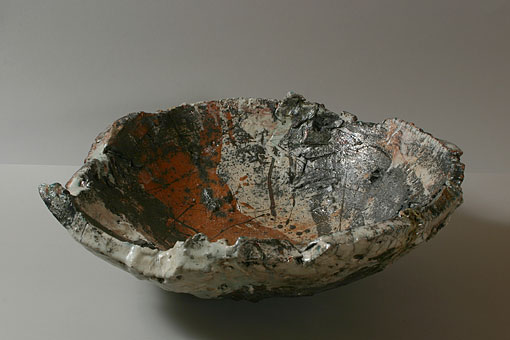| privacy policy english.german |
 |
Earth defines the geographical location where man is born, means cultural history, mentality and outer home. On it wars have raged for thousands of years. All of mankind share the earth, as with the shared responsibility of living together. The invited ceramicists worked with clay as a symbol of the earth and formed their own individual impressions of home. Philippe
Godderidge - France | Petra Töppe-Zenker
- Germany | Ruth Shomroni - Israel | |
Philippe Godderidge - France - www.philippegodderidge.com
|
„Phillipe
Godderidge´s work appears to stem far back in the time
of the beginning of our human existence. He has flattened straw and
clay into sheets, in the way the early crop growers used to make their
clay tiles. He has then sanded two of these slabs and, fired them with
the help of an improvised kiln. We find ourselves standing before these
fired slabs like archaeologists before the remains of an ancient fire,
which have left darkened rings in the buried layers. The circles of
fire, the first home of man in a still unknown wilderness. Petra Töppe-Zenker - Germany - www.petra-toeppe-zenker.de
|
„We also receive a glimpse from the present into our origins in the work from Petra Töppe-Zenker. Many of her pots, which are not “thrown” on the wheel, but worked from inside out by pressing and moulding the material into its hollow form, are reminiscent of the Neolithic, i.e. band ceramic which where typical in central Europe. Following a visit to the archaeological city of Petra in Jordan, Töppe-Zenker is inspired by the small round huts, in which the human body squeezes into as into the uterus. In a similar way she has layered blocks of clay in an architectural way around the curved back of a colleague, who had positioned herself in an embryonic form on the floor. A large, red ceramic form, which lies on the floor like a fallen vase, is reminiscent of the Omphalos of the ancient Greeks in Delphi, the “navel of the world”, which other cultures, such as Buddhism recognise: the middle point, origins, home, first nutrition – here in the “navel of the world “ an inseparable, naïve unity of understanding, can still be formed. Petra Töppe –Zenker deliberately uses her free ceramic work as a possibility to remind one of the distant past, to visualize the roots of our origins. One can place home very deeply.” *
|
„Still
further go back many forms, as in the ones we find in the work of Ruth
Schomronin from Israel. She takes her inspiration form the
fossilised remnants of life in the primeval oceans, which are now found
in the deserts of the near east. Life meant creation, creativity –
at least this is what we assume of the frugal regions of deserts. The
fact that we find these signs of pre historic sea-life there shows us
that nothing stays as it is. In change lies the chance of life.”
*
|
„In Margret Weise (from Naumburg)’s work one finds quotes of the past, which are constantly ironically broken. So appear her graphically modelled heads, which lean in style towards the terracotta warriors of Xi’an, placed on a map of the Thüringia-Sachen-Anhalt borders like a surprise invasion: Help, the Chinese are coming! With the wink of an eye she brings the long-time stranger directly into her studio, calmly manipulates it and playfully incorporates it into her own design intentions.” * Merwat Essa - Palestine - www.mervat-essa.com
|
| „The humorously ironic gesture of Margret Weise unexpectedly meets an opponent in the work from the Palestinian, Mervat Essa. She has used the relief prints of headscarves in clay as a subject in her work for a long time. They are the scarves that the Islamic women wear to cover their faces for celebrations or ceremonies. The intense patterns of creases she used to model onto reliefs of faces in her earlier work, she exhibits today simply as scarves. Clean and neatly folded in a pile they appear to be waiting for the right occasion to be worn. Crumpled, they suggest collective ritual. Mervat Essa works her own family history into the objects which itself is a history of exile from her homeland.” * Danijela Piculjan - Croatia - www.kerameikon.com
|
„The
very recent history of exile and war in her homeland has also inspired
the Croatian
|
„Radenko
Adnadj from Serbia uses the ceramic surfaces as an alternative
to canvas: he paints on it. He aims to see his gestural expressions
captured in the treatment of the glaze. Like a graphically structured
undercoat the Raku technique prepares the painting surface. In this
way the objects offer not only a fascinating graphical and painted-like
surface. They also relate a fracture, are structured like vases, but
in fragments, captured before they are completed. This tension between
the painted like attraction of the surface and the fractured pieces
of the sculpted design lend the work a saddening undertone.”
** |
[ intro ] [ ceramic ] [ music ] [ pinboard ] [ contact ] © International Music and Ceramic symposium Kapellendorf 2006 |
 Born
1955 in Saint-Maur/ France, lives and works in rural Torteval(France)
as ceramicist ( objects, ceramic installations, bodymoulds), solso exhibitions
(i.e. .: „petites suites“ l’usage du monde in StValery,
"Installations et Artefacts" inTanit théâtre
in Lisieux, „D'Improbables Jomonades“ Galerie "Pierre"
in Paris, Invitations to Japan and China (2005), Publications (ie cataloque„petites
suites“ l’usage du monde 2006) and represented in public
museums (i.e. in Chateauroux, Bayeux, Fuping (China), Dunkerque, Fondation
Schlumberger).
Born
1955 in Saint-Maur/ France, lives and works in rural Torteval(France)
as ceramicist ( objects, ceramic installations, bodymoulds), solso exhibitions
(i.e. .: „petites suites“ l’usage du monde in StValery,
"Installations et Artefacts" inTanit théâtre
in Lisieux, „D'Improbables Jomonades“ Galerie "Pierre"
in Paris, Invitations to Japan and China (2005), Publications (ie cataloque„petites
suites“ l’usage du monde 2006) and represented in public
museums (i.e. in Chateauroux, Bayeux, Fuping (China), Dunkerque, Fondation
Schlumberger).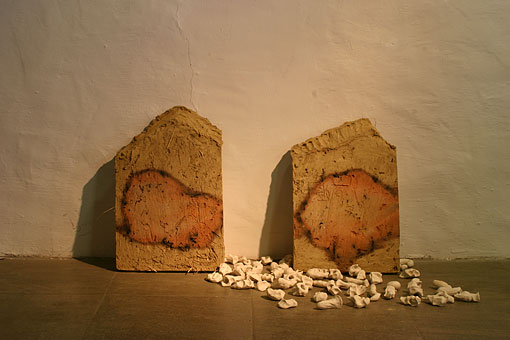




 Born
1967 in Merseburg , 2 years teaching training (art / german) in Erfurt,
ceramics training with apprenticeship, work experience in Weimar, Study
travels incl. Petra /Jordan. Lives and works as ceramicist in Kapellendorf,
membership incl. of VBK Thüringen, Symposien, numeropus solo exhibitions
in Germany (i.e. Erfurt/ „Haus zum Güldenen Krönbacken“,
Frankfurt a. M./ Galerie im Blauen Haus ), Awards (i.e. : Bürgeler
Keramikpreis 2004), Work in public Institutes (i.e. Naumburger Dom,
Handwerkskammer Erfurt, Imaginata Jena).
Born
1967 in Merseburg , 2 years teaching training (art / german) in Erfurt,
ceramics training with apprenticeship, work experience in Weimar, Study
travels incl. Petra /Jordan. Lives and works as ceramicist in Kapellendorf,
membership incl. of VBK Thüringen, Symposien, numeropus solo exhibitions
in Germany (i.e. Erfurt/ „Haus zum Güldenen Krönbacken“,
Frankfurt a. M./ Galerie im Blauen Haus ), Awards (i.e. : Bürgeler
Keramikpreis 2004), Work in public Institutes (i.e. Naumburger Dom,
Handwerkskammer Erfurt, Imaginata Jena).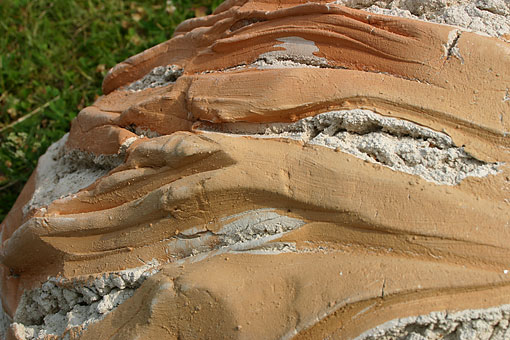




 Born
1937 in Tel Aviv/ Israel , parents had emmigrated from germany four
years earlier. since 1962 works in clay, self taught, training incl.
at the Avni and Bat–Yam Academy, member of the Ceramic Artists
Association of Israel and in the World Crafts Council Europe, lives
and works in Ramat–Hasharon/ Israel, Exhibitions in Israel (i.e
Schagal Museum/ Haifa, Periscope Gallery for Design/Tel Aviv) and Germany
(i.e. Droysen Gallery/ Berlin, Museum Papiermanufaktur Homburg) and
Awards (2. Place artistic competition of the Rothschild Fonds 2001).
Born
1937 in Tel Aviv/ Israel , parents had emmigrated from germany four
years earlier. since 1962 works in clay, self taught, training incl.
at the Avni and Bat–Yam Academy, member of the Ceramic Artists
Association of Israel and in the World Crafts Council Europe, lives
and works in Ramat–Hasharon/ Israel, Exhibitions in Israel (i.e
Schagal Museum/ Haifa, Periscope Gallery for Design/Tel Aviv) and Germany
(i.e. Droysen Gallery/ Berlin, Museum Papiermanufaktur Homburg) and
Awards (2. Place artistic competition of the Rothschild Fonds 2001).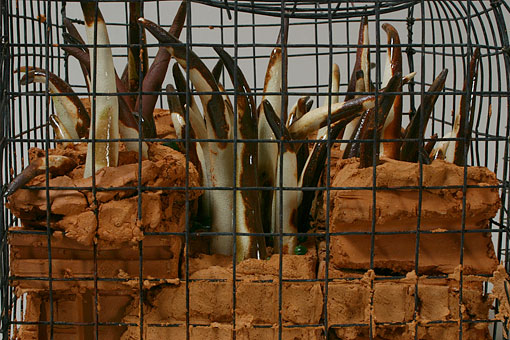




 Born
1941 in Naumburg , where she still lives and works today, 1961-65 ceramics
training with Master qualification, since 1972 member of the VBK, numerous
solo and group exhibitions at home and abroad, Awards (i.e. 1. Prize
XXX. International Competition „Pro Tadino/ Italien) and Working
grants (i.e. Künstlerhaus Edenkoben), Sales through numerous museums
and collections (i.e. Keramik-Museum Berlin, Staatliche Galerie Moritzburg/
Halle, Grassimuseum Leipzig, Keramion-Museum Frechen).
Born
1941 in Naumburg , where she still lives and works today, 1961-65 ceramics
training with Master qualification, since 1972 member of the VBK, numerous
solo and group exhibitions at home and abroad, Awards (i.e. 1. Prize
XXX. International Competition „Pro Tadino/ Italien) and Working
grants (i.e. Künstlerhaus Edenkoben), Sales through numerous museums
and collections (i.e. Keramik-Museum Berlin, Staatliche Galerie Moritzburg/
Halle, Grassimuseum Leipzig, Keramion-Museum Frechen).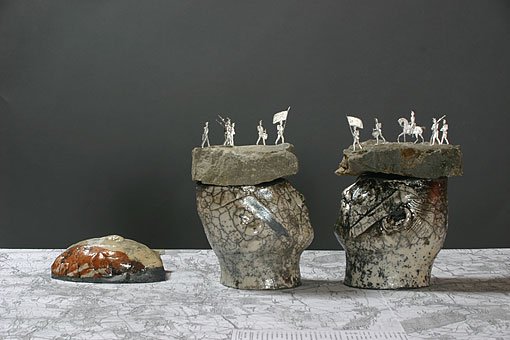




 Born
1970 in the Christian-Palestinian village Gush Halav / Israel, where
she lives and works again since 1997. 1991-94 ceramic studies at the
Art School Tel-Hai and since 2001 Arts studies at the Oranim College
in Kiryat Tevon. Since 1996 Arts Lecturer at Sackhnin College and since
2001 Art teacher in Peqiin. Numerous solo (i.e. Al-Markez Gallery Nazareth)
and group exhibitions (i.e. Artcar Museum/ Station, Huston/ USA) and
2003-2004 Award from the American-Israeli Arts Foundation.
Born
1970 in the Christian-Palestinian village Gush Halav / Israel, where
she lives and works again since 1997. 1991-94 ceramic studies at the
Art School Tel-Hai and since 2001 Arts studies at the Oranim College
in Kiryat Tevon. Since 1996 Arts Lecturer at Sackhnin College and since
2001 Art teacher in Peqiin. Numerous solo (i.e. Al-Markez Gallery Nazareth)
and group exhibitions (i.e. Artcar Museum/ Station, Huston/ USA) and
2003-2004 Award from the American-Israeli Arts Foundation.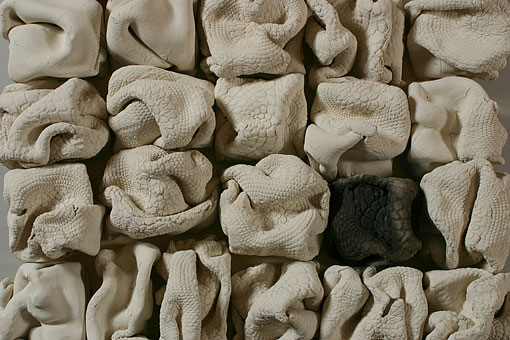




 Born
1967 in Zagreb, since 1997 studies at Blaženka Šoic Štebih
and from 2000 to 2005 Workshops at Gustav Weiss ' studios (Germany).
Member of the « Croatian Crafts Society » and in the «
Association of independant Artisits», Vicepresident of the Croatian
Ceramic Association «Keramikon» and Organisor of the International
Festival of Postmodern Ceramic in Zaraždin/Croatia 2002 und 2005.
Participation in numerous selected exhibitions in Croatia, Greece (1st
European Ceramic Competition Amorusion) and China, Various Awards.
Born
1967 in Zagreb, since 1997 studies at Blaženka Šoic Štebih
and from 2000 to 2005 Workshops at Gustav Weiss ' studios (Germany).
Member of the « Croatian Crafts Society » and in the «
Association of independant Artisits», Vicepresident of the Croatian
Ceramic Association «Keramikon» and Organisor of the International
Festival of Postmodern Ceramic in Zaraždin/Croatia 2002 und 2005.
Participation in numerous selected exhibitions in Croatia, Greece (1st
European Ceramic Competition Amorusion) and China, Various Awards.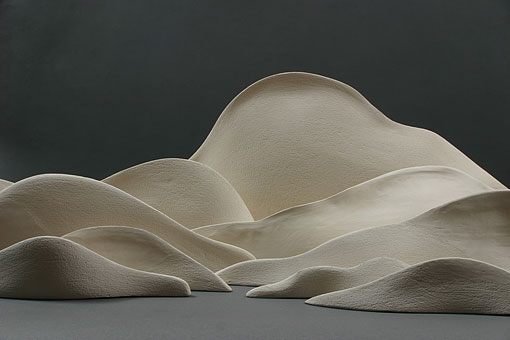




 Born
1960 in Tenja, Croatia, describes himself as Ceramic-painter, lives
and works in Belgrad/ Serbien, Member of ULUS ( Serbian Society of Sculptural
Art) and ULUPUDS (Serbian Society of Crafts and Design), since 1988
Solo and Group exhibitions (i.e. Second International Trienal of Ceramics
“CUP 2000” Belgrad), Awards (i.e. 1. Ceramic prize of the
„4. Bienale for Crafts, Smederevo“) and Sales vai Crafts
Museums Belgrad and the Gallery for Modern Art, Subotica.
Born
1960 in Tenja, Croatia, describes himself as Ceramic-painter, lives
and works in Belgrad/ Serbien, Member of ULUS ( Serbian Society of Sculptural
Art) and ULUPUDS (Serbian Society of Crafts and Design), since 1988
Solo and Group exhibitions (i.e. Second International Trienal of Ceramics
“CUP 2000” Belgrad), Awards (i.e. 1. Ceramic prize of the
„4. Bienale for Crafts, Smederevo“) and Sales vai Crafts
Museums Belgrad and the Gallery for Modern Art, Subotica.